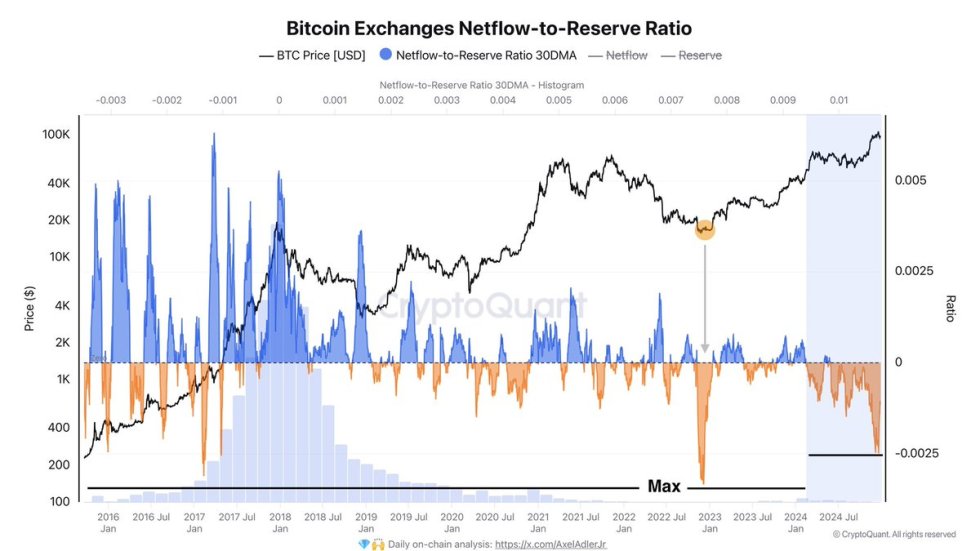In the last year, crypto staking became one of the most discussed topics among digital asset enthusiasts. But what does staking refer to? The term originates from an alternative to the proof of work (PoW) consensus mechanism employed by Bitcoin.&
Proof of stake (PoS) is another way to verify transactions and secure a blockchain network. In turn, a PoS consensus mechanism promotes network health by offering incentives to users who opt to stake their native currency.
One of the reasons behind this rise in popularity is PoS’ capacity to generate higher yields than traditional interest rates. Furthermore, staking has become more attractive to blockchain and crypto users because it consumes less electricity, and is thus considered more environmentally friendly.
Where much of the original crypto infrastructure is built on blockchain networks that utilize PoW, transitioning to fully PoS consensus mechanisms can be costly and even inefficient for some networks.&
Read along as we discuss how PoS differs from PoW, and why some networks, such as Bitcoin, are even reluctant to make the switch.
Proof of work mechanism
Launched in 2009, Bitcoin was the first cryptocurrency to gain worldwide recognition. Due to the straightforward but brilliant invention called proof of work, Bitcoin was the first to be accepted as a secure blockchain-based asset. PoW offered a quick fix to a coordination issue that was believed to be unsolvable, known as the Byzantine Generals problem.&
To get a clearer picture, imagine several generals that are trying to conquer the ancient city of Byzantium. If they attack together, they will succeed. However, if they attack individually, or at different times, they fail. The problem refers to how the generals can reach an agreement when they are separated while factoring in that some are perhaps not reliable.
Crypto developers love this problem because it is analogous to the same issue at the heart of blockchain networks. What is the best way to ensure network consensus, maintain an agreed-upon ledger, and maintain network security? The solution to this problem was seen in the proof of work mechanism.&
PoW was able to solve this issue in two ways — by incentivizing healthy network behavior and punishing bad acts. As more users are invited to participate in the network in good faith, the likelihood of weeding out and neutralizing harmful activities increases. In turn, the growing network population helps ensure the network remains decentralized, which is a critical requirement for a healthy blockchain. A good rule of thumb when it comes to network security: the bigger the user base, the more secure the network, and the greater the costs of dishonest behavior.&
How does PoW function?
As you may conclude from the name, the participants of the PoW mechanism have to provide proof of work. The work involves solving extremely complex mathematical puzzles and employing considerable computing resources to detect the right answers. Every resolved puzzle makes a new “block” that records validated transactions. Next, such blocks are added to a chain of existing blocks. This way, a chronological record or ledger of transactions is created and maintained.&
This manner of working allowed anyone to become a block creator, popularly known as a miner. However, solving these complex puzzles requires increasingly more computational resources, and new equipment powerful enough to keep up with the competition.
PoW problems
When Bitcoin first appeared, it was possible to mine it with a common home computer. Only a couple of years later, solving blocks and puzzles demanded more powerful machines and resources. By 2013, crypto miners needed highly-specialized devices made particularly for solving extremely complicated equations. Those devices were called Application-Specific Integrated Circuits, or ASICs.&
Every computer joining the network wants puzzles to be solved faster. However, each additional puzzle is more difficult than the one that came before. This has resulted in a race between miners to maintain a dominant level of computing power. Sometimes, this puts crypto mining out of reach.
As the powerful devices capable of solving these puzzles and creating new blocks became increasingly expensive, average users met financial barriers to participating. This is particularly obvious in the case of Bitcoin. Only giant and mighty crypto mining businesses would run factories of mining rigs, removing hobbyists and their home computers.&
How can a crypto enthusiast on their home computer expect to compete with state-of-the-art mining rigs operated by a multinational corporation?
Historically, creating barriers to equal network access among participants often leads to centralization. This is true in the case of Bitcoin, where fewer and fewer miners are accounting for the computing power minting new coins. As it’s already known, it is any form of centralization that is the greatest nemesis of cryptocurrency, since it destroys decentralization efforts the entire concept of cryptocurrency fights for. When fewer users have the right to take part in the consensus, the network risks being controlled by a single person or governing body. In addition, having fewer miners to validate transactions reduces the network’s capacity to weed out bad actors. As a consequence, the network becomes vulnerable to attacks and internal malfeasance.&
Security and centralization aside, PoW also devours colossal amounts of electricity. This has caused rising concerns that cryptocurrencies running on a PoW mechanism generate a massive carbon footprint.&
In 2021, it was estimated that Bitcoin drained 91 terawatt-hours of electrical energy per year. This figure extends the overall electricity consumption in Finland and its population of 5.5 million. Yet, it seems to be declining, according to the Cambridge Bitcoin Electricity Consumption Index. As of August 18, 2022, it was estimated at 87.35 terawatt- hours.
To address some of these issues, a new consensus mechanism emerged as an alternative to the PoW protocol — proof of stake (PoS).
Source: SpectroCoin
Proof of stake as an alternative
Proof of stake consensus mechanism appeared only a few years after Bitcoin. At the time, Bitcoin was believed to spend approximately $150,000 per day on electricity. PoS developers Sunny King and Scott Nadal proposed implementing a new algorithm called “staking” to add new blocks and confirm transactions. Rather than using miners, a PoS network uses nodes called validators to secure the network. These validators are selected at random to confirm new transactions, prioritized by the amount of crypto, or stake, they hold in the network.&
Such a mechanism requires much less technical knowledge to participate since people wouldn’t have to perform complex calculations. The only thing they were supposed to do was stake crypto.&
Crypto staking is a process in which users hold an amount of a network’s native currency, and then delegate it to the blockchain. Those coins or tokens are then “locked” to ensure network consensus and verify new transactions. In turn, holders receive rewards for staking proportional to the amount they delegated.&
A simple illustration of staking might go like this. If Node A holds 10 coins they decide to stake in a network managing an overall supply of 100 coins, they may have a 10% chance to find the next block.&
Source: Medium
Therefore, during the staking process, validators don’t consume massive amounts of energy to solve complex equations. Instead, they delegate crypto to boost their chances of discovering new blocks.&
For participating in the system, honest stakers are motivated by rewards in terms of new coins obtained from forming new blocks and collecting transaction fees. Much like with PoW, dishonest participants are punished with fines and risk losing all or a portion of their stake
Proof of stake challenges
Even though PoS protocols are much cheaper and more environmentally friendly compared to PoW, switching consensus mechanisms is not that simple. Not every crypto has the infrastructure or a community willing to transition away from aPoW mechanism. Yet, there are crypto assets that decided to abandon costly PoW and move to PoS. Ethereum, the second most popular cryptocurrency, is in the process of transitioning to a PoS network.&
Ethereum story of implementing PoS
In its initial stages, Ethereum reflected Bitcoin’s consensus algorithm to a great extent. However, for the past four or five years, Ethereum developers have been supervising a steady shift to a proof of stake protocol.&
What also urged Ethereum to switch to PoS is the high verification expenses experienced since 2016. As its popularity grew, its capacity was maxed out multiple times. As a consequence, users had to pay hundreds of dollars or wait for hours or days to get their transactions confirmed.&
However, the migration to PoS has not been as smooth as expected. Ethereum has been forced to postpone the shift on multiple occasions due to inconclusive results from various testnets. The primary reason was the fact that PoS was not affirmed on a network as robust as Ethereum. Even a small mistake might bring about losses amounting to billions of dollars in crypto assets.&
The chief challenge of PoS as an alternative to PoW is security. Namely, it is not as prominent nor battle-hardened as Bitcoin’s PoW protocol. BTC managed to survive and prove PoW to be a feasible way to secure a cryptocurrency whose market cap exceeds $430 billion. In contrast, the greatest PoS concerning market cap is BNB with less than $50 billion.&
Furthermore, the major concerns regarding PoS protocol include initial distribution and monopoly of the wealthy.&
Initial distribution
The PoW consensus mechanism is in which you have to make a contribution using your computing power and then reinvest what you’ve earned. In contrast, the PoS protocol requires you to buy a certain amount of coins to make a stake. The question remains, how are coins distributed in a PoS network in the first place?
Staking pools, which refer to the total amount of staked funds that stakeholders contributed to the network, may solve this barrier to some extent. The main drawback is that they would only make the already rich participants more wealthy and powerful.
The monopoly of the rich
This is just the continuation of the previous issue. Supposing that the whole idea of a distributed network is to thwart the few having power in their hands. As the wealthy could acquire the majority of stakes, and keep on getting richer from staking rewards, the PoS protocol would easily fall prey to manipulation. But how could this happen?
Blockchain networks running on PoS protocols typically include governance measures as well. Governance refers to a way that defines how a network may develop in the future, or make any decisions regarding the network. For any changes to be made to the network, a proposal is put to a vote, and participants use their right to state whether they are pro or con to the changes.&
However, how powerful a participant’s vote is will depend on the number of coins or tokens they hold. Expectedly, more affluent participants have greater voting power. And this is precisely what put PoS in danger of malice, as well as centralization.&
Namely, a rich but malicious actor may buy enough crypto to have most of the tokens in a network, then take over it without any difficulties. This is referred to as a 51% attack. In simple terms, if you held the majority of tokens in the network, you would be able to make one-sided decisions on valid and invalid transactions. Other participants — thousands or even millions of them — may bear the consequences of spiteful or simply wrong decisions, just because they own 49% of tokens.
Yet, these risks are not necessarily downsides of the PoS protocol. Quite the contrary, staking lowers the barrier to entry for would-be users by requiring less complex equipment and high-priced energy consumption. Additionally, some networks allow users to stake any amount of native currency, creating countless new opportunities to engage and earn.&
By encouraging broader participation across the network, PoS protocols are often more decentralized than their PoW counterparts. These additional nodes increase the number of consensus participants, thus ensuring improved security and network health. While exchanges can still be hubs for custodial staking, they pale when compared to the centralized mining farms run by some businesses, governments, and private individuals& & &
Why will Bitcoin stick to PoW?
Although other blockchains have moved, merged, or re-emerged as entirely new algorithms, Bitcoin has been reluctant to adopt new technologies. Rather, it chooses to enhance its current technology with soft upgrades which won’t change its essential mechanism.&
While it’s impossible to foresee how Bitcoin will evolve and behave in the coming years, some facts can be gleaned from its history. If one theme remains consistent, Bitcoin’s developers and community are skeptical of changes to the network.
Too much at stake for PoS
In terms of finance, attacking Bitcoin is nigh impossible to the point that there is no incentive to do so. Even if it happened, the network would manage to recover in minutes. This is the reason an increasing number of people are accepting BTC as an unchangeable, reliable, and secure currency. Its security is greatly due to its PoW mechanism which makes it expensive and impossible to attack BTC.&
Nearly everyone who holds or uses BTC, and the computers that secure Bitcoin are rooted in an economic motivation and penalty system that functions well. Any other method would demand plenty of extra incentive. While there is no doubt that BTC’s proof of work mechanism devours energy, the advantage of that security makes BTC invulnerable to hackers or malicious actors.&
There have also been counter-arguments regarding claims that Bitcoin is damaging the climate. Namely, the topic was recently talked over in the latest World Economic Forum meeting held in May 2022. During the meeting, the leaders were required to check Bitcoin’s energy consumption following earlier requests from Greenpeace to shift Bitcoin to PoS.&
Is Bitcoin truly energy consuming so much energy?
The climate changes and resulting issues are undoubtedly vital to deal with. However, there is an article proving that about 39% of energy implemented in BTC mining is taken from renewables, whereas the rest comes from surplus production. Furthermore, more recent results from Bitcoin Policy Institute (BPI) suggest that numerous criticisms against proof of work protocol don’t stand up to investigation.
For instance, Bitcoin energy consumption may be the same as the usage of Finland or other countries, but it also secures way more of their GDP value. Energy consumption by Bitcoin is easy to calculate because it is transparent about it. This, however, can’t be said for other industries such as traditional banking or even gold. At the end of the day, research suggests that the energy consumed by Bitcoin will rise to about 1% of the world’s usage, then start declining over time.&
While the future of crypto is as opaque as any, there’s no doubt that discussions around consensus mechanisms remain open-ended. As networks continue searching for the right balance between scalability, security, and decentralization, they must weigh the benefits of PoW and PoS. Ultimately, users will decide which solution provides the best pathway for their unique crypto journeys.
Disclaimer: Information provided by CEX.IO is not intended to be, nor should it be construed as financial, tax or legal advice. The risk of loss in trading or holding digital assets can be substantial. You should carefully consider whether interacting with, holding, or trading digital assets is suitable for you in light of the risk involved and your financial condition. You should take into consideration your level of experience and seek independent advice if necessary regarding your specific circumstances. CEX.IO is not engaged in the offer, sale, or trading of securities. Please refer to the Terms of Use for more details.

You can get bonuses upto $100 FREE BONUS when you:
💰 Install these recommended apps:
💲 SocialGood - 100% Crypto Back on Everyday Shopping
💲 xPortal - The DeFi For The Next Billion
💲 CryptoTab Browser - Lightweight, fast, and ready to mine!
💰 Register on these recommended exchanges:
🟡 Binance🟡 Bitfinex🟡 Bitmart🟡 Bittrex🟡 Bitget
🟡 CoinEx🟡 Crypto.com🟡 Gate.io🟡 Huobi🟡 Kucoin.




















Comments